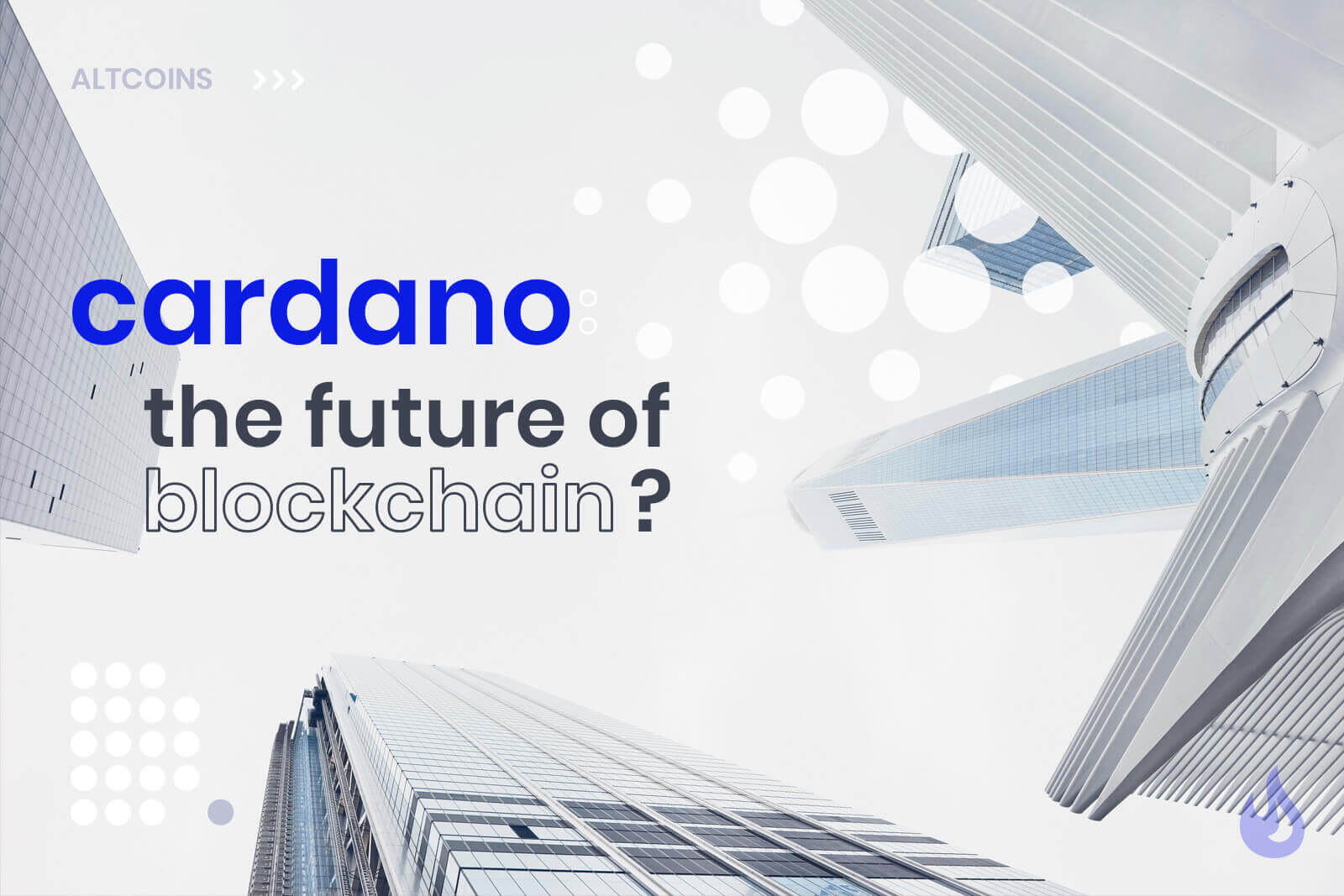
Cardano is taking the DeFi world by storm right now and its hard-fork update is scheduled for today, March 1. Bitcoin was the first Proof-of-Work (PoW) based crypto to achieve mass adoption, followed by Ethereum, trying to transition from Proof-of-Work to Proof-of-Stake (PoS).
We will discuss its potential to be the first completely PoS based crypto to enter the mass market. Since it is completely open-source, designed with recognized researchers’ cooperation, it is likeliness to blow up soon. Cardano’s organization is constituted of three major players who we will also discuss in this article.
What makes Cardano (ADA) special?
Cardano’s strength is in their approach and their vision. Cardano’s team has a scientific, academic approach, with peer-reviewed papers, an excessive number of PhDs, and university affiliations. They explain everything on video, super old-school, with a whiteboard so that even those unfamiliar with the terminology can get the concepts down.
Sponsored
EMURGO is the company finance and commercial wing behind the Cardano Ada token. They have a vision for solving real-world on-the-ground problems that are affecting the world today using the Ada coin.
Their “Africa strategy” strives to drive Cardano’s adoption in the African continent to everyday users and businesses by engaging with local stakeholders like Governments, NGOs, and private sector companies in delivering projects. They are also training and educating local developers to create solutions for local problems.
How is Cardano different from Bitcoin?
Cardano uses an open-source blockchain-based Consensus system like Bitcoin but uses Proof-of-Stake (PoS) rather than Proof-of-Work(PoW). This means that mining Ada does not require large amounts of processing power to work like for BTC but rather works by staking, which utilizes the money (Ada) you have on the blockchain to verify transactions. The blocks with large amounts of money staked on them can be considered legit. In this way, Cardano skips the high transaction times and fees inherent in Bitcoin and, as of now, in Ethereum. Running a stake pool has minimum requirements:
- 4 GB of RAM.
- A network connection with 1 GB of bandwidth per hour.
- A public IP4 address.
‘Mary’ update and Goguen era
According to Cardano’s Roadmap, the Cardano blockchain development will occur in 5 stages, called eras. Each era will focus on one aspect of Cardano’s development. The ‘Mary’ update is the step to implementing the third era, called Goguen, that focuses on developing and deploying Smart Contracts protocols. The five main stages (eras) of Cardano’s development are:
Byron (Foundation era)
The Byron era of Cardano began in September 2017 with the launch of Cardano’s first version. The Byron stage of Cardano enabled the buying and selling of ADA on a federated network powered by the Ouroboros consensus protocol, the first PoS protocol built on extensive academic research.
Shelley (Decentralization era)
Shelley is an integral part of Cardano’s transition to better decentralization. The Shelley mainnet was officially launched on July 29, 2020, heralding in the proof-of-stake era for Cardano and offering staking rewards to participants. The Shelley era will make way for better network participation among the community, which can be done by transferring more nodes under their own control.
Goguen (Smart Contracts era)
The Goguen mainnet is expected to be launched on March 1, 2021. The Goguen era will usher in a bigger technical capability for developers to create DApps that can provide more functionality to the chain, including implementing its multi-asset blockchain plan. Another feature that will be made available through the Goguen implementation is wider interoperability with other existing smart contracts, regardless of the difference in coding language used to develop them. The ‘Mary’ update is the second update to usher in the Goguen era.
Basho (Scaling era)
Cardano’s Basho era, the launch date of which is yet to be confirmed, will optimize the network, helping it to scale and become more interoperable. It will introduce side-chains that will be used as a sharding mechanism to scale the network capacity further without affecting its security.
Voltaire (Governance era)
Cardano’s Voltaire era will deliver the final touches to the network to help it mature into a fully self-sustainable and decentralized platform. Voltaire will see a voting and treasury system introduced, and participants can utilize their stakes and voting rights to steer Cardano’s future development. With these self-governance pieces in place, Cardano’s journey to full decentralization will be complete, and its management will be transferred from IOHK to its community.
Use-Cases
IOHK, the technical wing behind Cardano’s development, has successfully trained and hired junior software developers and used Cardano in Ethiopia’s agriculture industry. This involved training an all-female class of Ethiopian and Ugandan students using Haskell (the language Cardano is built with) during a 2 month period.
IOHK has been working closely on the creation of Plutus, a purpose-built smart contract development language and execution platform using the functional programming language Haskell. Plutus is already available for testing and brings the benefits of functional programming to smart contract creation. It also allows one codebase to support both on and off-chain components, improving the development experience’s coherency and usability compared with existing smart contract implementations.
Last week, Startup MuKn and blockchain research and development company IOHK announced a partnership to bring the Glow programming language, for Dapp development, to the Cardano blockchain. Glow is a domain-specific language that will allow anyone to write blockchain-based applications and deploy them on Cardano. Glow is initially being launched on Cardano’s Ethereum Virtual Machine (EVM) developer network (devnet), an environment that currently allows developers to write in Solidity (the smart contracts programming language used in Ethereum) and deploy these smart contracts for testing.
Cardano’s future: its hopes and dreams
Cardano was founded by Charles Hoskinson, the co-founder of Ethereum. It is said to be a next-generation blockchain designed from the ground up to solve all the problems previous generations like Bitcoin and Ethereum had. It has a scientific approach to problem-solving with academic peer-reviews of everything they do, based on three design principles:
Scalability
Cardano tries to solve the scalability problem from the beginning. To achieve this, they assess the scalability problem as increasing the transactions per second that the network can process and increasing network availability and data scaling. Come to the end of the Shelley era.
We expect Cardano to be 50-100 times more decentralized than other large blockchain networks, with the incentives scheme designed to reach equilibrium around 1,000 stake pools.
Current prominent blockchain networks are often controlled by less than 10 mining pools, exposing them to serious risk of compromise by malicious behavior, which Cardano avoids with a system inherently designed to encourage greater decentralization. Not only that, but the entire Cardano network runs at a fraction of the power cost of equivalent proof-of-work blockchains, using the electricity equivalent of a single house rather than a small country.
Interoperability
Interoperability refers to the ability of a blockchain to interact with other blockchains. As Cardano’s founder Charles Hoskinson said: “There won’t be one coin to rule them all.”
It is most likely that we will have a lot of tokens and Blockchains for different use cases in the future. Cardano intends to position it as the “Internet of Blockchains,” meaning they can provide seamless interoperability between different blockchains so that all projects can be interconnected. To achieve this, they want to develop “side-chain” solutions that can implement “cross-chain” transactions.
Sustainability
According to Charles Hoskinson, this might be the toughest problem to solve. It refers to how Cardano is going to pay for future developments and growth. The most prominent idea around this is implementing a Treasury system inside Cardano’s blockchain, very similar to how the Dash treasury system works.
In a nutshell, this system will use some of the block rewards as a deposit to the treasury.
To that end, the Voltaire era will add the ability for network participants to present Cardano improvement proposals that can be voted on by stakeholders, leveraging the already existing staking and delegation process. Whenever there’s a new change proposed or a new feature that wants to be introduced to the network, the developers must submit a ballot, and Cardano stakeholders can vote and decide if the ballot should be granted or not. If the proposal is approved, the ballot submitter gets the grant for development.
Challenges
Cardano is slow on delivering their solution compared to Ethereum and other general-purpose blockchains, but this is because they are not compromising quality and security with timelines, which may lead to failure in these fast times. The scale of this endeavor is vast, and its development, which has been many years in the making, will continue for the next 10 years, at the very least.
Cardano’s team must balance profitability with their already highly-advanced theory, and doing so will be their greatest challenge. Their dependence on community participation is also massive, so they must increase their public eye visibility. Failure to meet expectations can be fatal at this stage, especially since their operation depends on Cardano (ADA) staking by holders.
